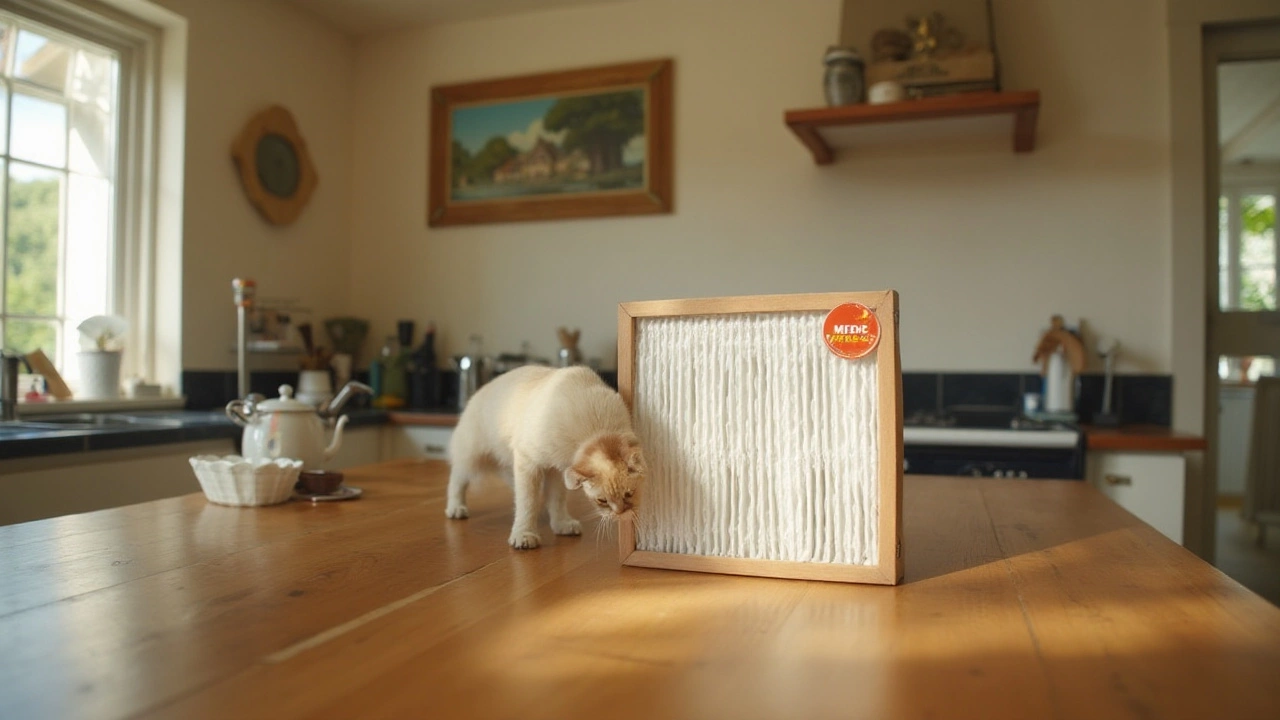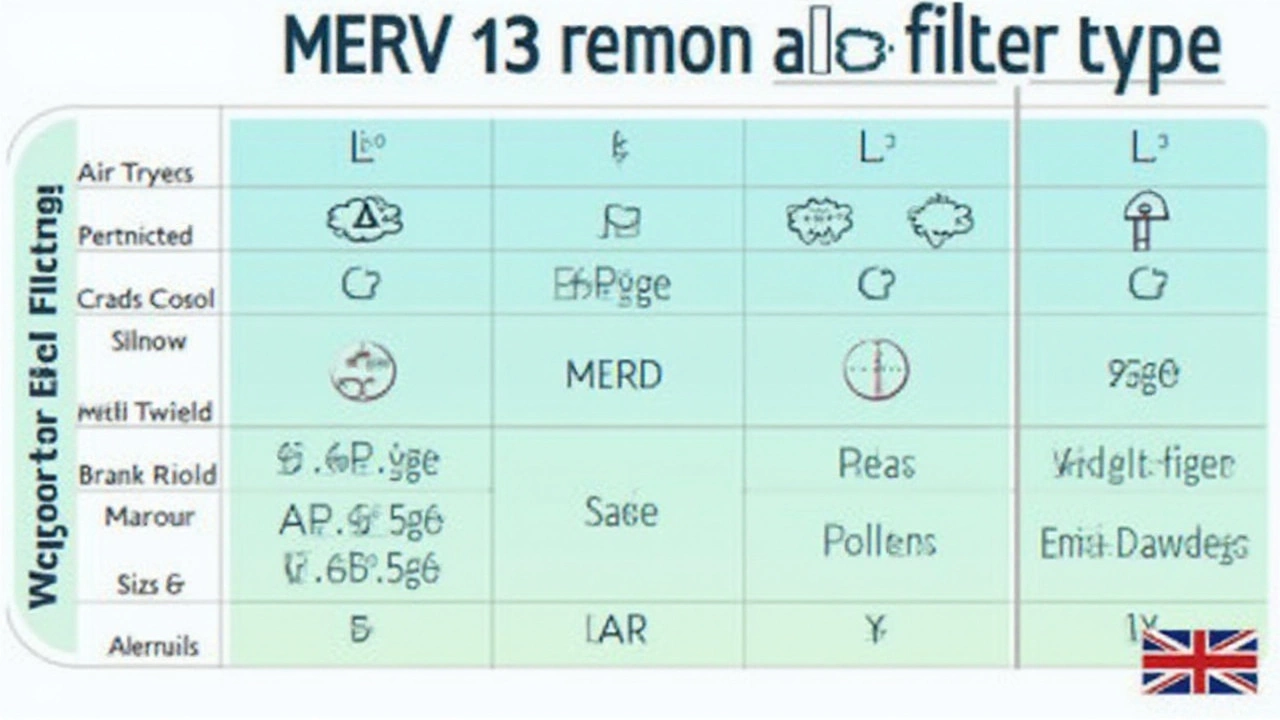When it comes to maintaining a healthy and comfortable home, air quality plays a vital role. With cleanliness in focus, many homeowners consider upgrading their air filters. But is a MERV 13 filter, known for its high filtration efficiency, too much for your home setup?
Understanding the different MERV ratings available is essential in making an informed choice that aligns with your budget and health needs. These filters, while effective at capturing tiny pollutants, can also have implications on your HVAC system's airflow and energy consumption.
In this article, we'll explore the ins and outs of using a MERV 13 filter in a residential setting. By examining benefits, shortcomings, and other available options, you'll be better equipped to decide what's best for your household's air quality and overall wellbeing.
- Understanding MERV Ratings
- Benefits of MERV 13 Filters
- Potential Downsides in Homes
- Choosing the Right Filter for Your Needs
Understanding MERV Ratings
The term MERV stands for Minimum Efficiency Reporting Value, which is a scale developed by the American Society of Heating, Refrigerating and Air-Conditioning Engineers (ASHRAE). This scale ranges from 1 to 20, with each level representing a filter's ability to capture particles of certain sizes. A higher MERV rating indicates a filter's capability to trap smaller particles, which is crucial for maintaining high indoor air quality. For instance, filters with a MERV rating between 1 and 4 offer basic particle filtration, catching larger elements like pollen, dust mites, and textile fibers. These are commonly seen in residential situations where basic air filtering is sufficient.
As you move up the scale, the filters become more efficient. Filters rated MERV 5 to 8 are typically used in standard residential and commercial buildings. They can capture mold spores, and dust, and start to deal with finer particles that you might not even see. On the commercial side, offices often employ MERV 9 to 12 filters, catching lead dust, flour, and other respiratory irritants. Then there's the MERV 13 to 16 range, typically reserved for hospitals and general surgery rooms for capturing Bacteria, smoke, and even sneeze droplets are no longer an issue with these filters. However, applying a MERV 13 filter in your home can result in debates due to its high level and possible impact on airflow, making a balance between air quality and system load crucial.
Interestingly, MERV ratings go beyond indoor air quality, playing a role in energy efficiency as well. According to some studies, using a filter with a high MERV rating might increase your HVAC system's operating pressure, demanding more energy to push the air through. It's an essential factor for homeowners weighing the benefits against energy costs. As highlighted in an HVAC study, “higher MERV ratings are effective but come with a cost of greater energy consumption” — reminding users about the importance of considering energy dynamics along with filtering efficiency.
It's critical to understand that while higher MERV ratings usually mean better filtration, they are not always the best option for residential use without considering compatibility with HVAC systems. If the system isn’t designed for it, a MERV 13 filter can strain the motor, leading to increased wear and tear. Homeowners should check manufacturer recommendations and consult HVAC professionals before deciding on the correct MERV rating to ensure their system operates smoothly without extra maintenance requirements.

Benefits of MERV 13 Filters
For those striving to achieve pristine air quality in their homes, the MERV 13 filter stands as a robust option. One of the most compelling benefits is its ability to capture a wide array of airborne particles. These include dust, pollen, mold spores, and even some bacteria and virus carriers. Such efficacy in filtration is particularly beneficial for households with individuals who suffer from allergies or asthma. The MERV 13 filter captures particles as small as 0.3 microns, which is significantly finer than typical household filters. This means it can tackle many of the common allergens and irritants that lower air quality in residential environments.
Another advantageous aspect of using a MERV 13 filter is its potential to contribute to improved respiratory health. By reducing the number of particles in the air, these filters can lower the likelihood of respiratory and allergy flare-ups. Families with children and pets, who are more susceptible to air quality fluctuations, may notice a reduction in related health issues. Additionally, during times of seasonal changes or when outdoor air pollution levels rise, the MERV 13 can act as a first line of defense in maintaining clean indoor air.
Reducing the Spread of Germs and Odors
The MERV 13 filter's dense construction also supports its role in reducing certain airborne bacteria and viruses. Although not a replacement for direct medical interventions during disease outbreaks, a well-maintained filter can help lower the transmission risk of airborne diseases within the home. This can be of particular concern during flu season or unexpected pandemics. Moreover, these filters are adept at neutralizing odors, removing lingering scents from cooking, pets, and other sources that standard filters might miss. This dual action of removing particles and ensuring fresh air creates a more pleasant living environment."A good air filter not only refines the air we breathe but also enhances the environment we live in," said Dr. Linda Prowski, an air quality specialist at the Clean Air Institute.
Moreover, there's also an environmental upside to using MERV 13 filters. With their ability to sustain improved air quality, there's less dependency on air fresheners and chemical sprays, which contribute to VOCs in our homes. The investment in a high-efficiency filter can lead to long-term savings by reducing the need for frequent cleaning and maintenance of household surfaces, as dust and other particles are less likely to settle. While it's vital to weigh these benefits against energy use and airflow considerations, many homeowners find these trade-offs worthwhile for the health and comfort they provide.

Potential Downsides in Homes
Choosing a MERV 13 air filter can initially seem like a straightforward decision for improving indoor air quality, but there are practical aspects to consider. One of the primary concerns with using such high-efficiency filters is their impact on your HVAC system. Typically, the more efficient a filter is at trapping fine particles, the more it can restrict airflow. This can make your heating and cooling system work harder, potentially increasing energy bills and shortening the lifespan of your HVAC equipment. A MERV 13 filter captures small particles like smoke, bacteria, and even some viruses, but at the cost of requiring the system to push air through denser material. This strain isn't just theoretical; studies have shown systems with overly restrictive filters can face reduced efficiency by up to 20%.
The practical implications extend to maintenance considerations, too. A high-density filter like the MERV 13 tends to accumulate dust and allergens more quickly, leading to more frequent replacements than standard filters. While some homeowners might appreciate the diligence in removing pollutants, not everyone can commit to the increased expense and effort in maintenance. Regular inspections and timely replacements are vital to prevent clogging and ensure the system maintains optimal airflow. In households where neglect happens—owing to busy schedules or oversight—this can mean not only decreased air quality but also potential damage to the system.
"Using filters with higher MERV ratings in residential systems demands balance," says John Lucas, HVAC engineer at Bristol's well-regarded Home Air Solutions. "Too much of a good thing can lead to inefficiencies and homeowner headaches." His statement reflects the broader industry caution towards the blanket upgrading of filters without considering specific home system capabilities.
Beyond technical issues, there is the matter of necessity. In homes without severe allergy concerns or located in regions with low environmental pollution, a MERV 13 might exceed actual needs. More often than not, a slightly lower rating provides ample protection with less burden on your HVAC system—allowing for good air quality and system efficiency. It's like using a sledgehammer when a regular hammer would do; it might be effective, but not always merciful to the rest of your setup.
Finally, it's important to consider the initial cost. While high MERV filters offer excellent purification, they can be more expensive than their counterparts. This cost, combined with the frequency of change, might make them a less economical choice for some households. Balancing between air quality needs, budget, and the technical capability of your HVAC system is, therefore, crucial. For many, the best decision might be a middle-ground filter that offers good filtration performance without the side effects of reduced system performance.

Choosing the Right Filter for Your Needs
Deciding on the best air filter for your home can be a bit daunting, especially with so many options available. The choice often boils down to a balance between air quality and system efficiency. When considering a MERV 13 filter, it’s crucial to understand not just its benefits but also how it fits into your broader HVAC strategy. An important aspect to consider is what exactly you hope to achieve with your air filtration. Are you targeting allergens for health reasons, or are you primarily concerned with general air quality improvements? Understanding your goals will greatly aid in making the right choice.
A MERV 13 filter excels at removing a variety of contaminants, including pollen, dust mites, and even smaller particles like certain bacteria and viruses. However, using such a filter requires ensuring your HVAC system is powerful enough to handle the potential airflow reduction, which is a common side effect of higher-efficiency filters. An inefficient system may not circulate air effectively, leading to increased energy costs or even wear on the system components over time. As suggested by numerous professionals, it's always beneficial to consult your HVAC manufacturer or an expert to confirm whether your system can support a MERV 13 filter without hindering its performance.
In some cases, installing a MERV 13 filter might be akin to over-compensating for problems that could be solved with simpler solutions. For instance, regular maintenance of your HVAC system like changing filters frequently, cleaning air ducts, and ensuring proper ventilation might suffice for most households.
"The best filter for your home is not just about catching the most particles, it's about balance," says John Doe, an HVAC specialist from the Air Quality Institute.It's often found that families with members suffering from respiratory issues or allergies might benefit the most from a MERV 13 filter due to its superior capability to clean the air of allergens compared to lower MERV-rated filters.






